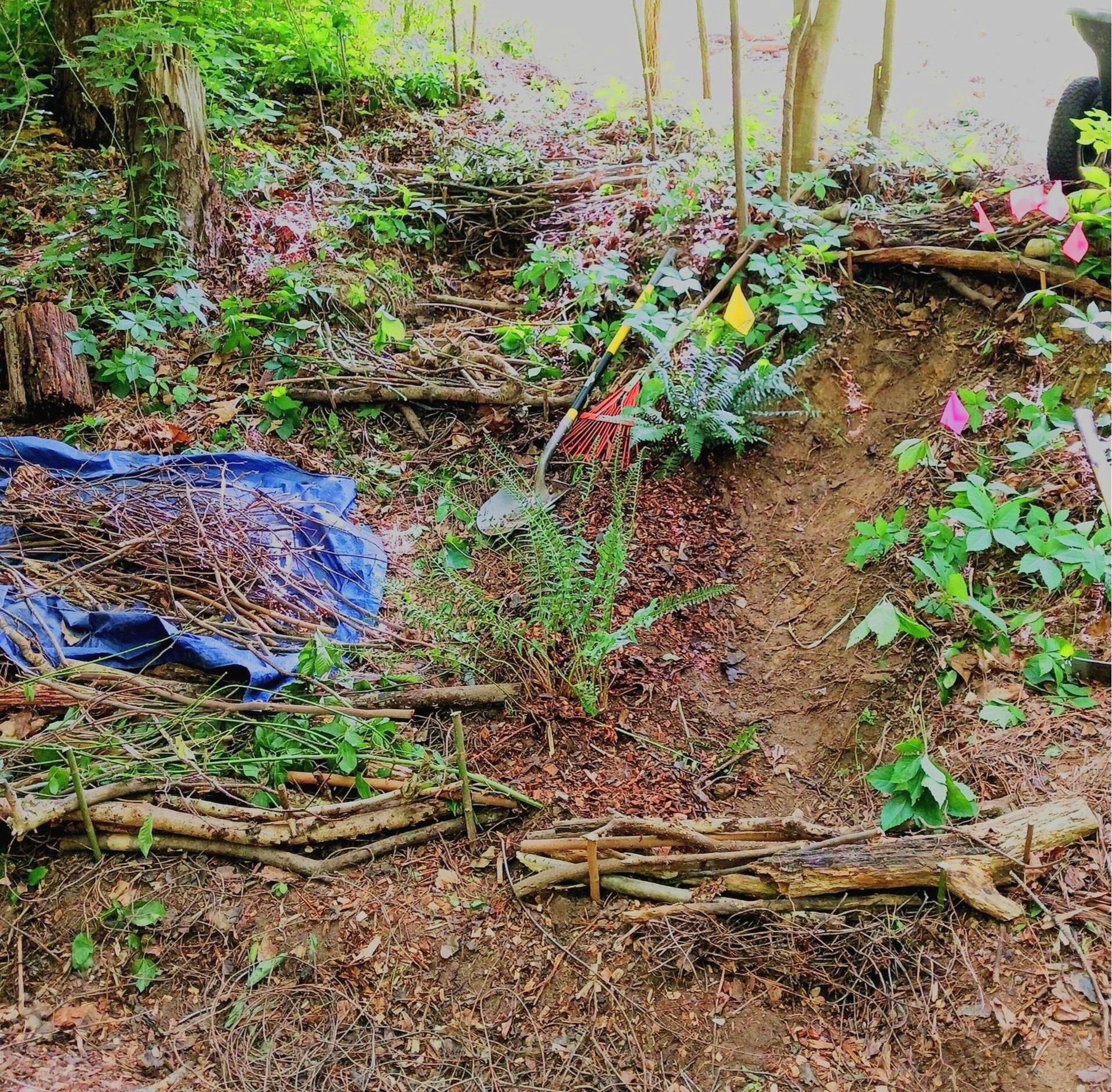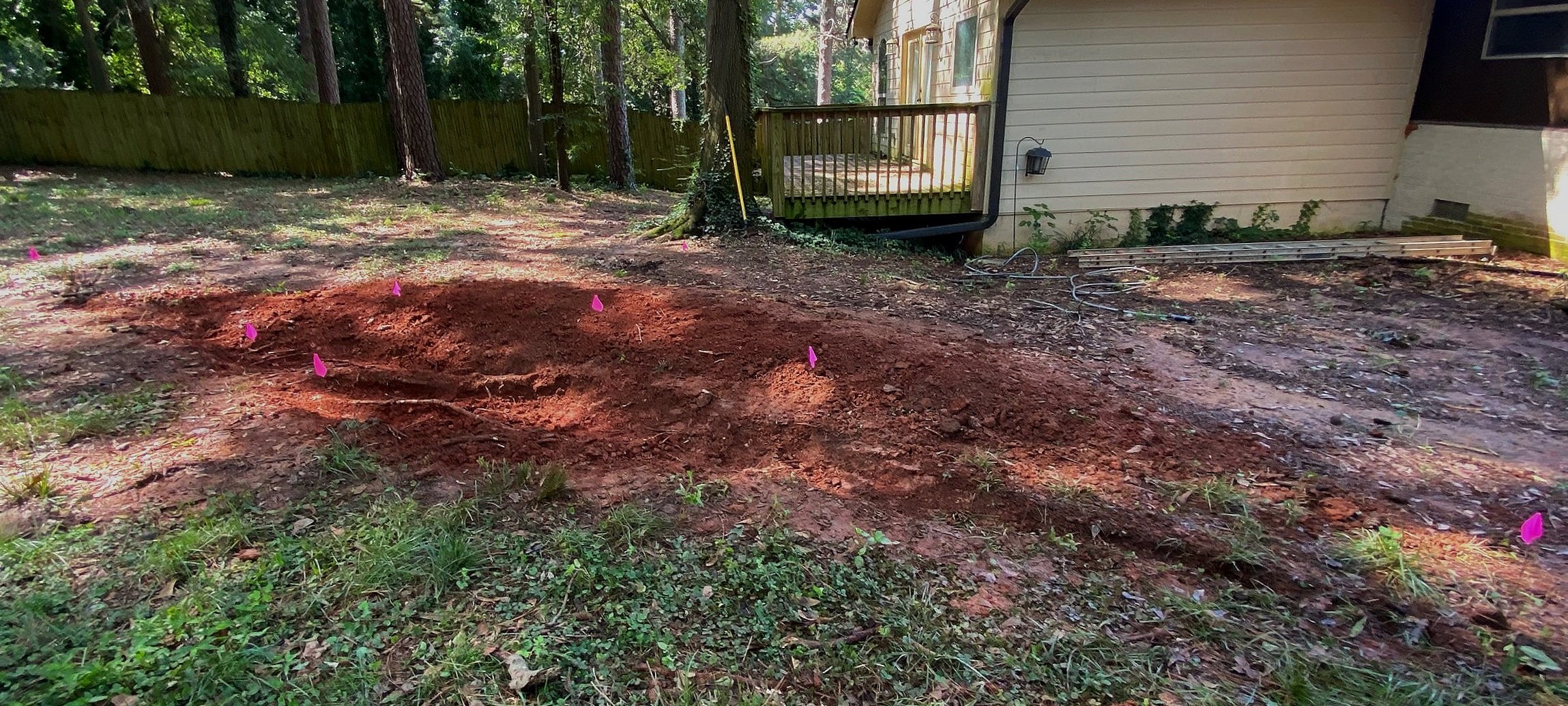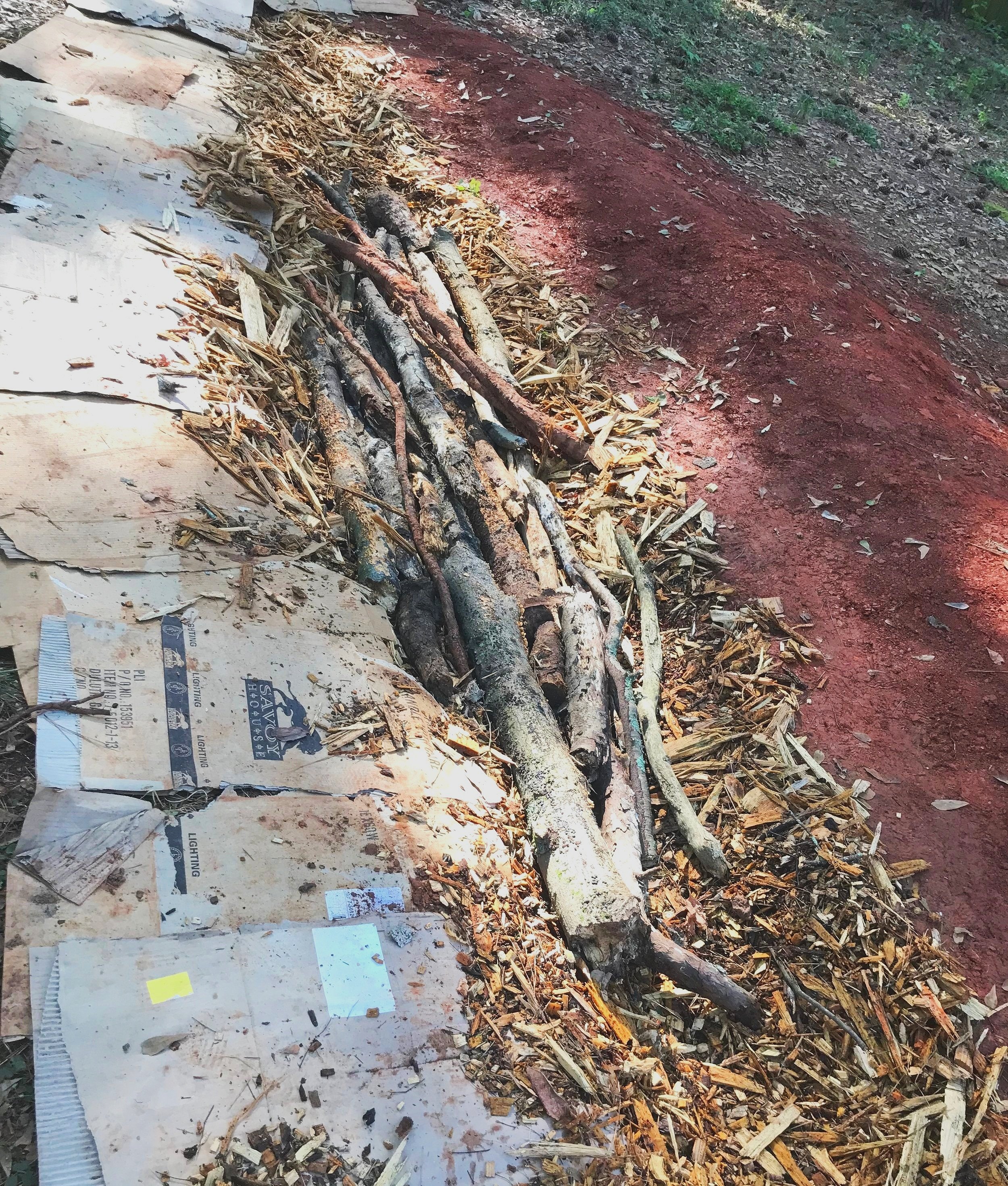

Brush berms being installed along a drop-off to slow sheetwater runoff before entering a rain collection bed.

Swales are dug out and layered with hügelkultur that can be planted on top while water percolates back into substrate below. Berms are mounded to direct and keep water in the swale.

Swale systems disrupt and slow sheetwater runoff by providing an indirect, often zigzagging path for the water to follow. Where one swale flows into the next, riffles are used to stabilize against overflow.

Instead of flowing straight downhill, water is redirected through the riffle from one swale to the next, slowing runoff and eliminating all previous signs of erosion.

Swales are placed to divert and sink as much runoff as possible, especially in areas with severe erosion as on this site.

We are careful to work around roots over 1” diameter to preserve tree health.

Woodchips are a cheap and effective amendment to heavy clay soils.

In addition to feeding the soil with organic matter, hügelkultur aerates compacted substrates like clay, allowing for better water infiltration and increased volume capacity.


This swale and berm has successfully managed sheetwater runoff, allowing leaf litter to collect where erosion had kept the ground bare, and is now ready for planting at the client’s leisure.











